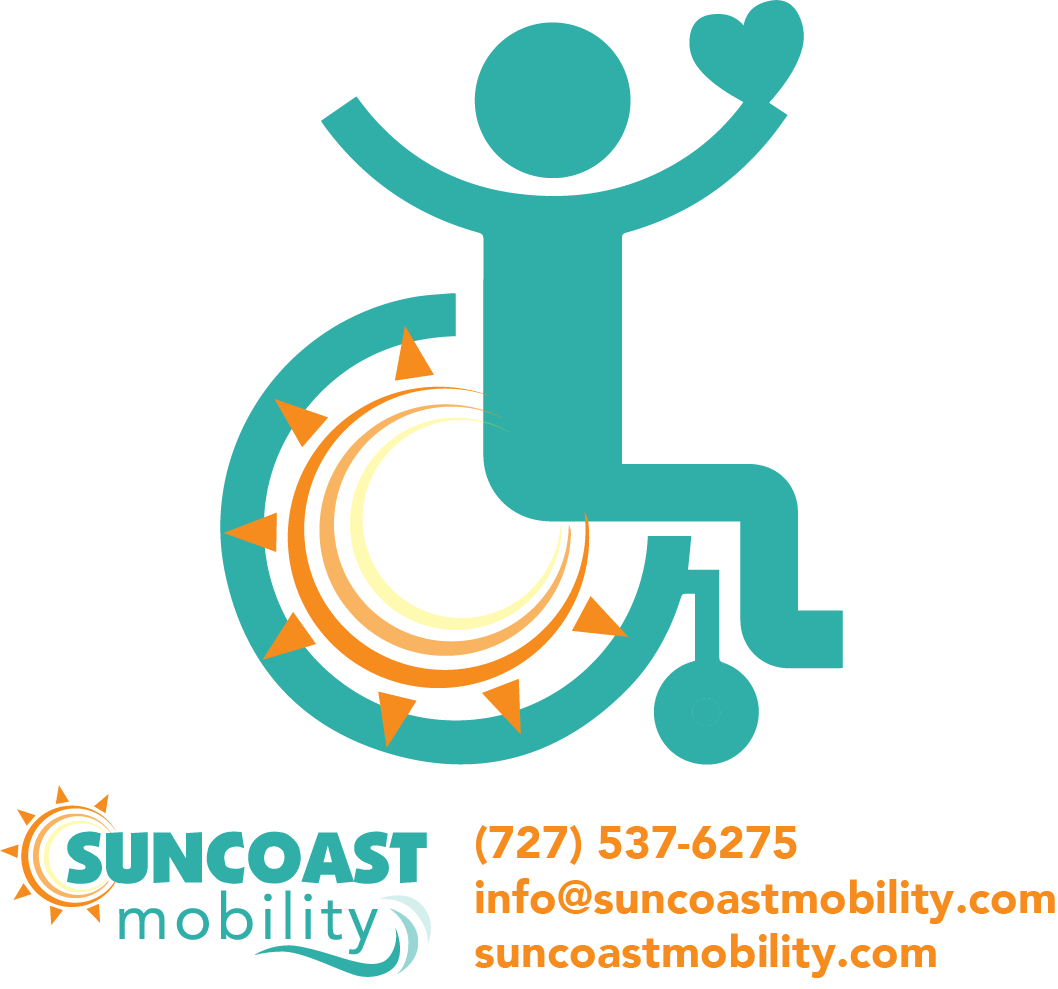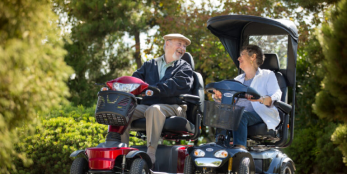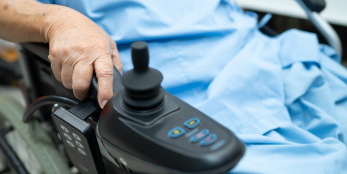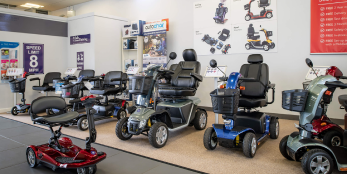Table of contents
American Airlines Mobility Scooter Policy: Complete Guide for Travelers
For passengers who rely on mobility scooters and power wheelchairs, air travel can seem daunting. From battery regulations to airport logistics, knowing what to expect before your flight is essential. American Airlines serves millions of passengers annually, including thousands who use mobility devices. Understanding their mobility scooter policy ensures you travel safely, comfortably, and without unnecessary stress.
This guide covers everything you need to know about flying with a mobility scooter on American Airlines, including booking, airport procedures, battery rules, gate-checking, and tips to protect your device.

Why Knowing the American Airlines Mobility Scooter Policy Matters
Mobility scooters and other assistive devices are protected under the Air Carrier Access Act (ACAA). This law requires all U.S. airlines to accommodate passengers with disabilities. While American Airlines is committed to providing accessible services, there are important rules to follow:
Cargo space limitations: Not all scooters fit in every aircraft’s cargo hold.
Battery restrictions: Lithium-ion and wet-cell batteries have strict guidelines for safety.
Advance preparation: Completing the necessary forms and informing the airline helps ensure proper handling.
Documentation: Taking photos and providing specifications protects your rights if the scooter is delayed or damaged.
By understanding these details, you can avoid last-minute complications and enjoy a smooth travel experience.
Booking Your Flight with a Mobility Scooter
Although American Airlines does not always require advance notice, it is highly recommended to notify the airline if you plan to travel with a mobility scooter. Providing your device information in advance helps the airline prepare for handling and ensures sufficient space in the cargo hold.
How to Request Assistance
You can request assistance in multiple ways:
During booking: Select “Special Assistance” when entering passenger information.
After booking: Go to “Manage Trips” on the American Airlines website and add mobility device details.
By phone: Call the American Airlines Disability Assistance line at 800-433-7300 to provide scooter specifications and request support.
For larger groups or international flights, it’s wise to notify the airline at least 48 hours in advance, giving them time to coordinate staff and equipment.
Preparing Your Mobility Scooter Before the Flight
Proper preparation is key to ensuring your mobility scooter arrives safely. Here are the most important steps:
1. Document Your Scooter
Take clear photos of your scooter from multiple angles, including the joystick, display panel, wheels, armrests, and battery compartment. This documentation is invaluable if your device is damaged or delayed.
2. Disassemble or Fold If Possible
If your scooter can fold or be taken apart, do so before travel. Compact pieces are easier for airline staff to handle and reduce the risk of damage in the cargo hold.
3. Label All Components
Use luggage tags or stickers to label each part with your name and contact information. This prevents misplacement during transport.
4. Protect Fragile Parts
Wrap sensitive components like the joystick, control panel, or display with bubble wrap or padding.
5. Attach Handling Instructions
Include a printed copy of your Mobility Device Handling Form with detailed instructions for disassembly, folding, battery removal, and reassembly.
Arriving at the Airport
When traveling with a mobility scooter on American Airlines, proper timing and clear communication with airline staff are essential to ensure a smooth process.
Arrive Early
It’s recommended to arrive at least two hours before domestic flights and three hours for international departures. Arriving early gives you ample time to check in, complete required paperwork, and allow airline staff to handle your mobility scooter carefully. This also reduces stress and ensures you won’t feel rushed navigating security and boarding procedures.
Notify Staff Immediately
As soon as you reach the airport, inform the check-in counter or gate agent that you are traveling with a mobility device. This ensures that your scooter will be properly inspected, tagged, and handled according to airline safety and accessibility protocols. American Airlines staff are trained to provide assistance, including helping you transfer to an airport wheelchair if needed.
Complete the Mobility Device Form
Passengers must fill out the Disability Assistance form, which provides crucial details about you and your scooter. This form typically includes:
The type of device (mobility scooter, power wheelchair, or manual wheelchair)
Battery type (lithium-ion, gel, dry-cell, or other)
Folding or disassembly instructions
Any special handling notes to protect delicate components
Providing complete and accurate information helps ensure your scooter is handled safely and returned in proper working order.
Inspection and Gate-Check
Once submitted, American Airlines staff will inspect your scooter, verify compliance with battery regulations, and attach a gate-check tag if applicable. The gate-check tag identifies your device as an assistive aid, ensuring it receives priority handling and is returned to you promptly upon arrival.
By following these steps, you can make the check-in and gate procedures seamless, helping your mobility scooter arrive safely and on time.
Battery Rules and Restrictions
Batteries are the most regulated aspect of traveling with a mobility scooter. American Airlines follows FAA and DOT guidelines to ensure safety during transport.
Power Disconnection Requirement
All scooters must have a physical way to disconnect power, such as:
Removing the ignition key
Locking the on/off switch in the “off” position
Disconnecting the joystick
Removing the battery and insulating the terminals
This prevents accidental activation during transport.
Lithium-Ion Batteries
Lithium-ion batteries are common in modern mobility scooters but are subject to strict limits:
Installed and non-removable batteries have no size limit if securely attached.
-
Removable batteries must be carried onboard in your carry-on, with watt-hour limits:
300 Wh maximum for a single battery
160 Wh maximum per battery if carrying two smaller batteries
Passengers may also carry one spare up to 300 Wh or two spares up to 160 Wh each
Labels must be legible and in English; damaged or missing labels may prevent transport
Other Battery Types
Gel, sealed lead-acid, and dry-cell batteries are allowed but must be properly disconnected and protected.
Gate-Checking Your Mobility Scooter
American Airlines allows passengers to ride their scooters to the gate, reducing fatigue and maintaining independence. Here’s how the process works:
Ride through the terminal: With TSA assistance if needed, you can use your scooter until the boarding area.
Tagging and inspection: Gate agents place a mobility device tag on your scooter, ensuring priority handling.
Transfer to a wheelchair: Before boarding, staff will assist you into an airport wheelchair. Pre-boarding is available if needed.
Scooter handling: Trained ground staff will move your scooter to the cargo hold, usually loading it last and unloading it first to minimize risk.
Upon arrival, your scooter is typically returned at the jet bridge or the gate, allowing you to transfer directly back onto it. In some cases, particularly at international airports, the scooter may be returned at baggage claim.
Protecting Your Mobility Scooter During Travel
Even with careful handling, damage can occur. Passengers should take proactive steps to protect their mobility scooter:
Before Your Flight
Take detailed photos of your scooter from all angles
Disassemble or fold the scooter if possible
Label each part with your contact info
Wrap fragile components with bubble wrap or padding
Attach handling instructions
After Your Flight
Inspect your scooter immediately upon return
Report any damage or delay to an American Airlines representative before leaving the airport
Southwest may offer loaner devices, repair services, or replacements depending on the situation
Pro Tip: Keep a small “mobility travel kit” in your carry-on, including duct tape, zip ties, and protective covers for quick fixes if minor damage occurs.
Key Considerations When Flying with a Mobility Scooter on American Airlines
Traveling with a mobility scooter on American Airlines requires understanding certain rules and guidelines to ensure a safe and comfortable journey. Here’s what passengers should know:
Onboard Power
American Airlines does not provide power for mobility devices during the flight. This means your mobility scooter or power wheelchair must be completely turned off and disconnected from any charging source before boarding. Planning ahead is essential, especially for longer trips, so that you know your device will remain inactive until you reach your destination.
Safety and Battery Compliance
Safety is a top priority. All battery-powered mobility devices must comply with FAA regulations for air travel. This includes proper disconnection, insulation of terminals, and adherence to watt-hour limits for lithium-ion batteries. Gel, dry-cell, and sealed lead-acid batteries are also allowed but must be secured to prevent leaks, short circuits, or accidental activation during transport. Ensuring your device meets these requirements helps prevent delays at check-in and ensures safe handling throughout your journey.
Assistance from American Airlines Staff
American Airlines staff are trained to assist passengers with mobility needs. This includes help with boarding, transferring to an airport wheelchair, stowing your mobility scooter in the cargo hold, and retrieving it at the destination gate. Pre-boarding is often available for passengers with mobility devices, giving you extra time to get settled and ensuring a smooth transition from the terminal to your seat.
By keeping these considerations in mind— power, safety, and assistance—you can ensure a smoother and more stress-free experience when flying with a mobility scooter on American Airlines. Proper preparation reduces the risk of delays, protects your device, and ensures your independence is maintained throughout your journey.
Common Questions About American Airlines Mobility Scooter Policy
Can I bring a mobility scooter on American Airlines?
Yes. Mobility scooters are accepted as assistive devices and must follow battery and size rules.
How much does it cost to bring a mobility scooter on a plane?
There is typically no extra cost, as airlines must accept mobility devices. You may incur costs for battery replacements or special packaging.
What size scooter can I take on a plane?
Scooters must fit in the cargo hold. Folding or compact scooters are easier to transport.
Are all batteries allowed?
No. Lithium-ion, gel, and dry-cell batteries are permitted, but lithium-ion batteries must meet watt-hour limits and be properly disconnected. Hoverboards, e-bikes, and recreational scooters are not accepted.
Final Thoughts
American Airlines provides a well-structured mobility scooter policy designed to balance safety, accessibility, and passenger independence. While passengers are responsible for preparing their scooters—especially regarding battery removal, labeling, and folding—the airline ensures gate-checking, pre-boarding assistance, and prompt return of devices.
Planning ahead is key. Arrive early, complete the required Mobility Device Handling Form, document your scooter with photos, and follow battery and size regulations. These steps minimize delays, protect your scooter, and make air travel with American Airlines stress-free.
By combining proactive preparation with the airline’s accessibility services, you can travel confidently, knowing your mobility scooter will be handled safely and returned promptly. Whether you’re flying domestically or internationally, American Airlines makes it possible for passengers with mobility devices to enjoy a smooth and independent travel experience.
Pro Tip: Carry a small travel kit with tape, zip ties, and protective materials to manage minor issues. Being prepared ensures you can focus on your journey instead of worrying about your scooter.








